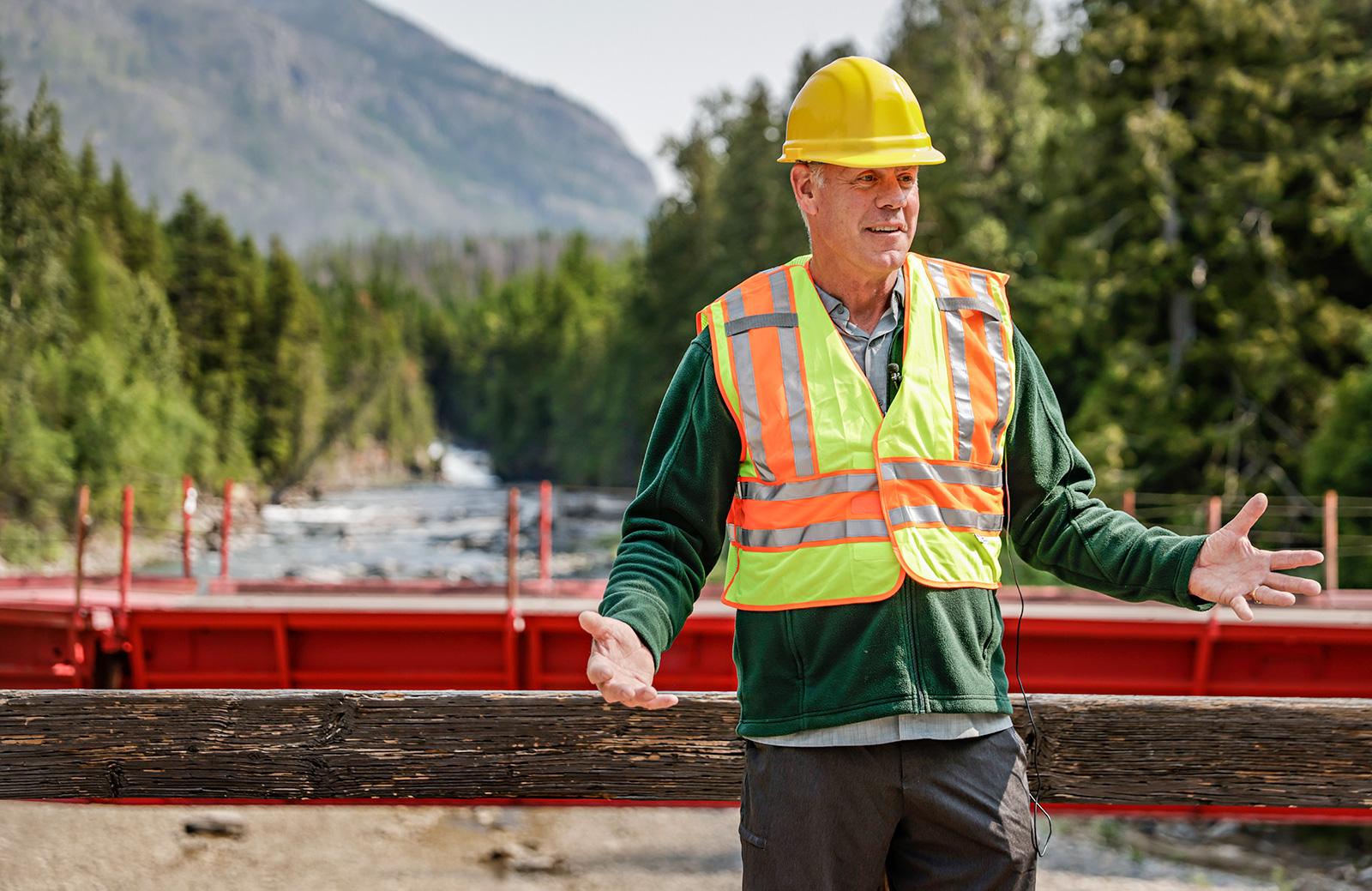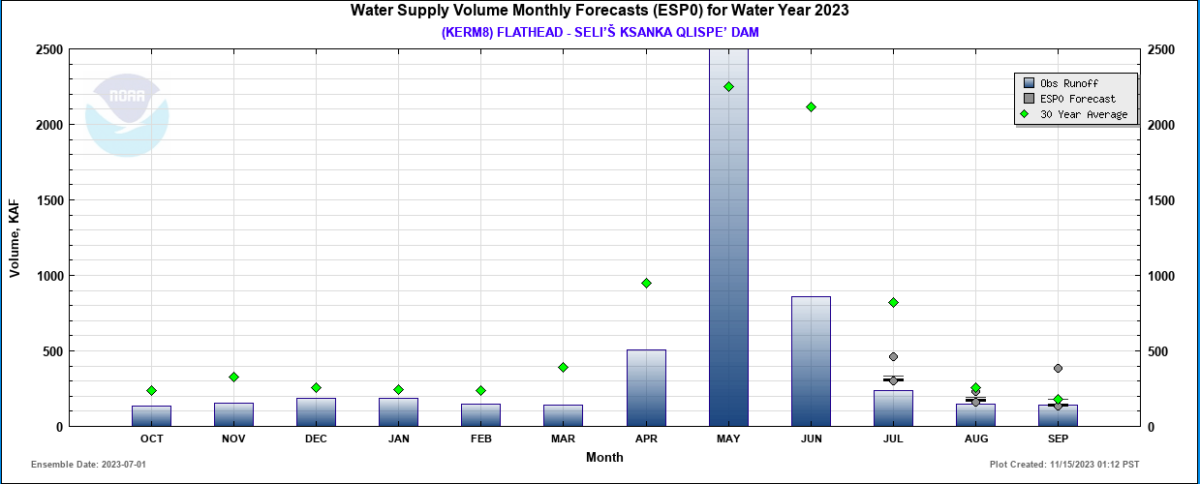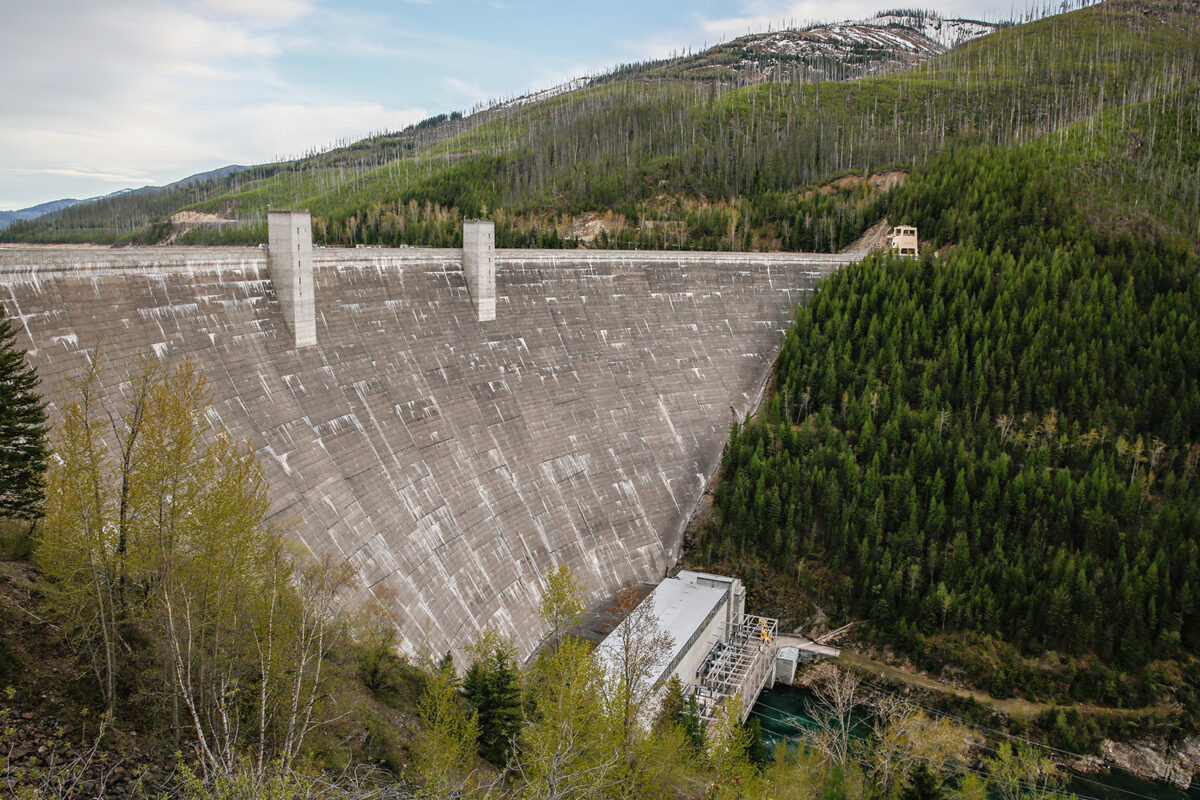Following Summer of Record-Low Flathead Lake Levels, ‘Fill the Lake’ Saga Reaches Congress
Montana Rep. Ryan Zinke introduced legislation requiring the Interior Department maintain Flathead Lake water levels at full pool during summer
By Micah Drew
Western Montana’s Republican U.S. Rep. Ryan Zinke, the former Interior Secretary under President Donald Trump, introduced legislation this week that would require the Interior Department to maintain Flathead Lake’s water levels to within a foot of full pool during the summer months — a directive that a team of technical experts rejected this historically dry summer.
The bill, named the “Fill the Lake Act,” directs the Interior Secretary to ensure a minimum level on Flathead Lake of 2,892 feet by utilizing water from Hungry Horse Reservoir, and a maximum water level of 2,893 feet by releasing excess water downstream through the Seli’š Ksanka Qlispe’ Dam that controls Flathead Lake’s output.
“This is a made in Montana solution. ‘Fill the Lake’ is a one-page bill — and it should be — it’s not a difficult concept,” Zinke stated in a press release. “Hungry Horse Reservoir exists for the management of water downstream, and that means Flathead Lake.”
Zinke led a “fill the lake” charge this summer when Flathead Lake dipped a full foot below its full-pool elevation of 2,893 feet in June, 2 feet below in July and ultimately ended more than 31 inches below full pool by the end of August. However, despite pleas from Zinke and other elected leaders to augment the historically low lake levels by releasing water from Hungry Horse Reservoir, the interagency technical team that manages federal dam projects in the Columbia River Basin, including the Bureau of Reclamation-managed Hungry Horse Dam, refused to bend to the political pressure, citing federal regulations and the adverse ecological impacts to the watershed.
Zinke, for his part, has remained unconvinced.
“Unfortunately, the delays and bureaucracy created by the Department of the Interior and the technical management team made a bad situation even worse,” Zinke stated. “This bill takes out the ambiguity and forces the Department and its unelected bureaucrats to do their most basic job so that Montanans don’t suffer from their mistakes again.”
During a historically dry year characterized by low snowpack and a record rate of snowmelt across northwest Montana, water supply volumes in the Flathead basin were 63% of the 30-year median, according to data from the Flathead Lake Biological Station (FLBS). From June 13 through Aug. 6, inflows to Flathead Lake were just 34% of the 30-year median. “There’s simply just no water in the basin,” FLBS director Jim Elser told the Beacon in August.

As the surface level of Flathead Lake inched down throughout June and July to historic lows, political pressure mounted for regulatory agencies to find a solution to alleviate the struggles of recreationists, marinas and other lakefront businesses.
One proposed action involved releasing water from Hungry Horse Reservoir upstream to augment the lake level, a proposal supported by Montana Gov. Greg Gianforte, Zinke, and the Flathead and Lake county commissioners.
Ultimately, any action to raise the water level even 6 inches, to within 1.5 feet of the dam-controlled lake’s full-pool elevation of 2,893 feet, was deemed unfeasible by the Columbia River Technical Management Team (TMT) in a July 14 meeting.
The TMT, made up of representatives from four states, five federal agencies and six tribal nations, prioritizes fish and wildlife above other system benefits, and makes operational recommendations to the action agencies that control federal dams.
During their July meeting to discuss Flathead Lake levels, it was decided that raising the lake level by 6 inches would not alleviate the issues experienced by farmers, irrigators and lakeside businesses, and further raising the water levels would drastically draw down Hungry Horse reservoir and could risk its refill capability next year. Another major factor in the TMT’s decision was the ecological impact to bull trout, a threatened species that is sensitive to changes in the river environment.

“The TMT is overwhelmingly made up of special interests from outside Montana. It’s obvious they don’t have Montana’s best interest in mind,” Zinke told the Beacon over email, adding that the situation is “not unique. The department balances differing priorities on every square inch of land or water it manages.”
Zinke also criticized how long it took for the TMT to act, saying that as a former Interior Secretary, he knows “the TMT is too diffused for any decisions during a crisis to be made before it’s too late. They waited more than two weeks from when [this issue] was raised in late June.”
Zinke and U.S. Sen. Steve Daines, R-Mont., sent letters to the Bureau of Reclamation commissioner on June 29, requesting assistance in stabilizing the water level. The TMT began discussing the low water levels of Flathead Lake at its next scheduled meeting on July 12 and was presented with an actionable System Operational Request from Gianforte’s office on July 13. Seven partner agencies objected, including Montana’s own representatives.
Hungry Horse Dam is managed throughout the summer for power and to augment the Flathead River for fish habitat, with a target drawdown of around 12 feet by the end of September, and a maximum allowed drawdown of 20 feet below its full pool level. One foot of water on Flathead Lake equates to roughly 5 feet of water from Hungry Horse Reservoir, making any substantial support from the upper reservoir consequential to its operational strategy.
Zinke’s bill only specifies the regulation of Flathead Lake’s surface level — it does not include any funding for impact studies.
Flathead County Commissioner Randy Brodehl, Lake County Commissioner Gale Decker and Polson Sen. Greg Hertz released statements in support of the legislation.